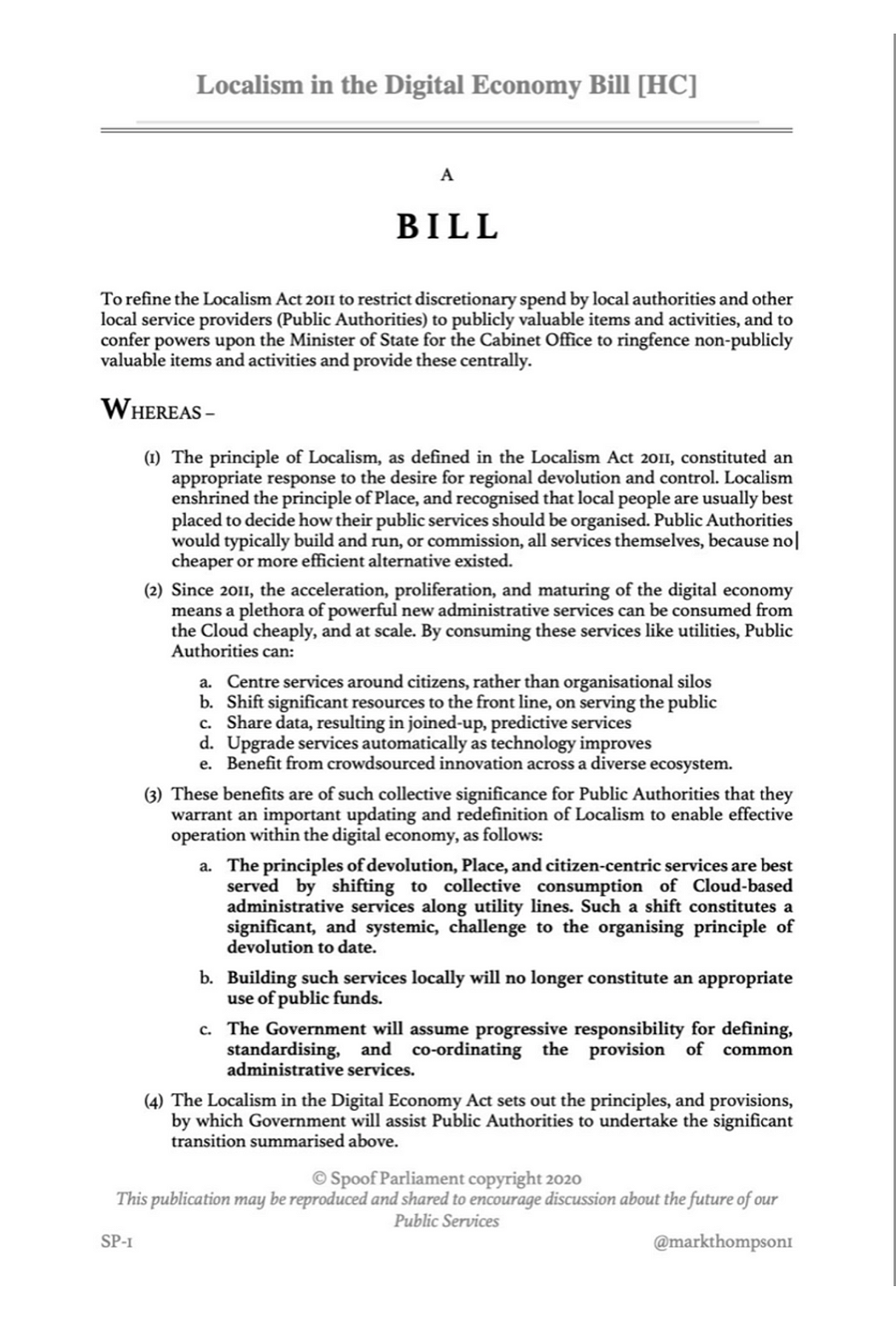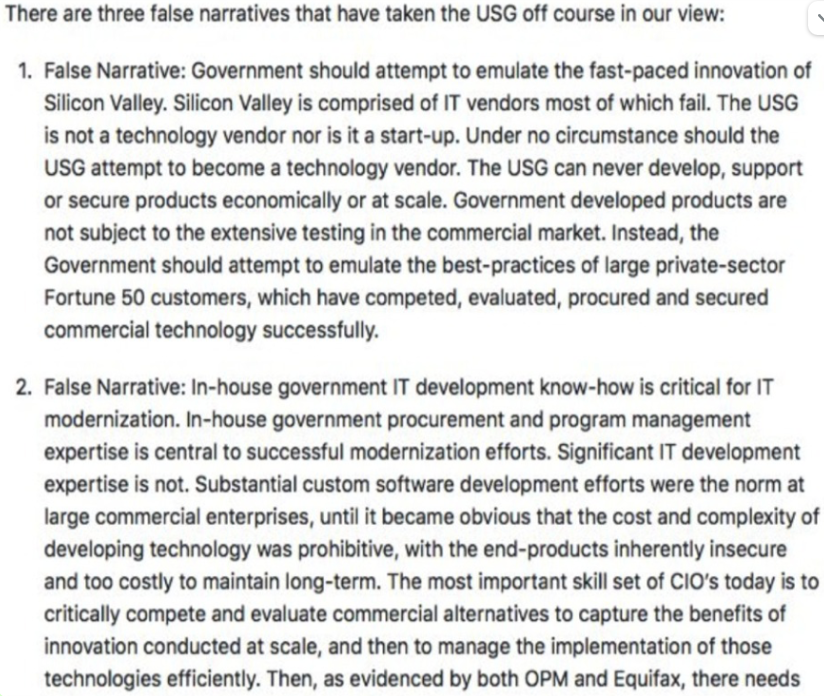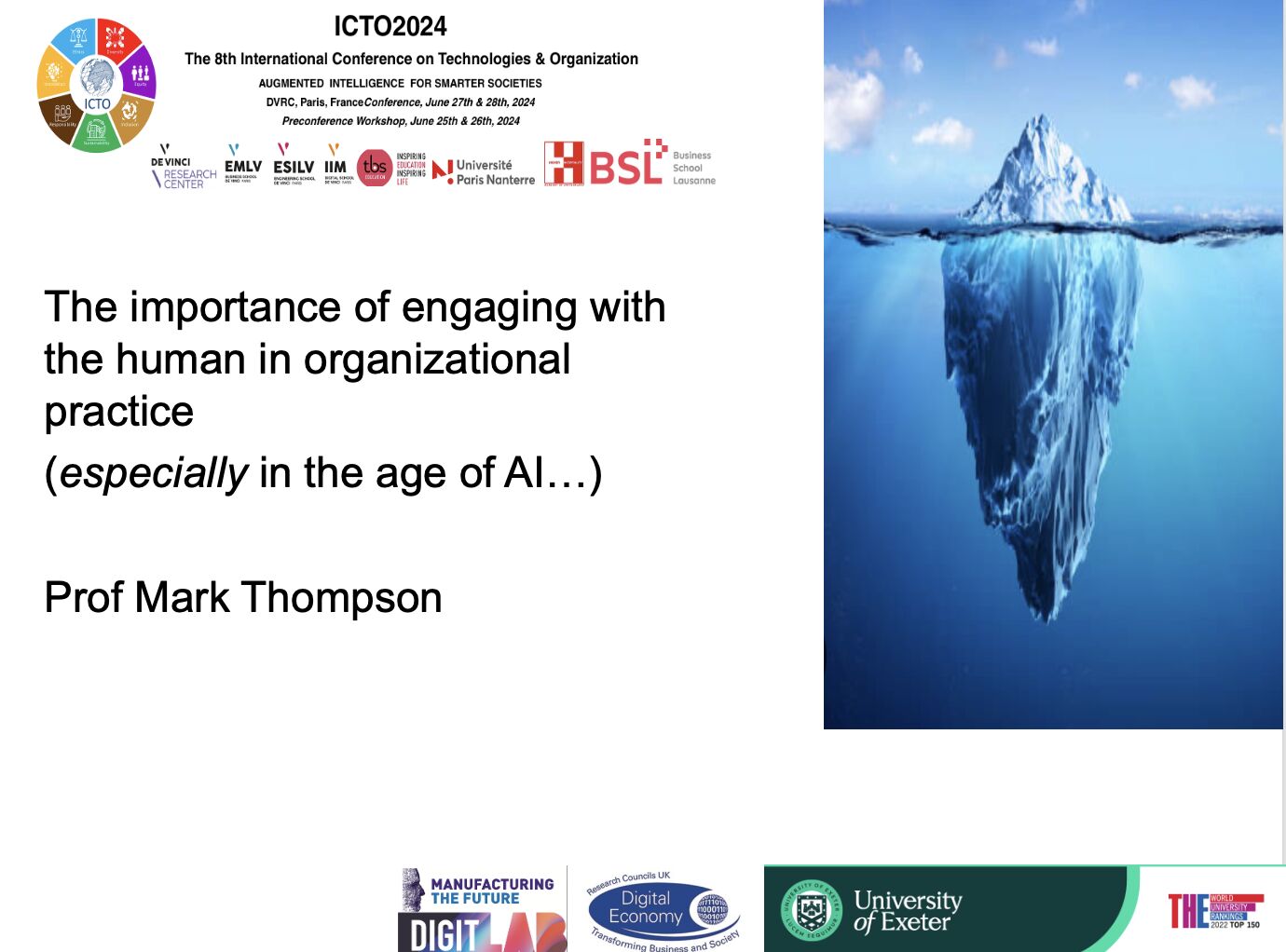By Mark Thompson
I’ve been reading with interest both James Plunkett’s and Theo Blackwell’s recent blogs advocating the creation of a new L-GDS/Local Digital Alliance (LDA). These are both great pieces, and as Theo says, the debate is timely. In particular, the vision of an empowered coalition of LG DDAT professionals catering to local needs, able to recombine/re-use interoperable capabilities, and periodically reinvigorated by a ‘tour of duty’ in a national L-GDS/LDA hub, is compelling: indeed, I’ve been arguing for just such a ‘Lego’ approach for some time now.
And yet. As I have been arguing for even longer (10 years, in fact) the clear danger is that the focus on building/delivering local stuff, at local level, driven by localism, eclipses the growing reality that the entire model is utterly broken at collective level, and diverts attention from sorting it out. By continuing the broken, inefficient, business-as-usual model, the danger is that pretty soon there’ll be precious little resources to deliver very much locally at all. I’ll offer two brief analogies to illustrate our current problem, and point the way to a possible answer.
Google tells me that Tescos (another useful local service) operates 4,169 stores in UK/Republic of Ireland (I could take any number of retail chains here, but let’s pick this one). Now imagine a ‘Barmy Tescos’ model where each of these Tescos stores, often delivering for a hyper-local profile, ran its own individual corporate function on the floor above the shop: each shop supporting its very own CEX-layer, finance, HR, procurement, marketing, IT, ops, estates, etc — and each of these with its supporting network of suppliers, advisers, etc — busily commissioning their own, bespoke, back-end functions and services, all with their own time-consuming office politics. It goes without saying that none of these bespoke back-end services, and associated preoccupations, would be of the slightest interest, or value-add, to Barmy Tescos’ customers (do you really care if your local Tescos is running its own, special, ‘local’, CRM? Etc.). Any supermarket daft enough to run itself on this principle of ‘wheel reinvention’ would quickly go to the wall as the ‘tail’ progressively ‘wagged the dog’ and customers accordingly voted with their feet. Happily, like all modern digitally-enabled organisations, ‘Real Tescos’ recognises that local focus is best delivered via rigorous standardisation, and consumption, of a common back-end.
Another example might be Heart FM, a network of 33 regional radio stations UK-wide. Tuning into any one of these, you’ll hear local weather, local traffic, local gossip, local advertising, local stuff for local people — but all underpinned with a standard music streaming platform, and common back-end (if I tune into my local Heart FM Dorset, I don’t care if these local services are underpinned by a Heart FM Dorset finance system or not: indeed, if it was, I’d think they were bonkers).
Tragically of course, the Barmy Tescos example loosely describes the collective operating model of our local services. This isn’t anyone’s fault: we’ve inherited this mess from the pre-digital age, when all councils needed to build/run their people/processes/tech from the ground up (similar arguments also apply to our 1,800 social housing organisations, 100s of NHS Trusts, etc). However, it remains that only a digital incompetent would design councils like this today, when the internet now enables us to consume ‘best in class’, always-on capabilities that we would once have had to build/maintain ourselves — and indeed to use these capabilities to collect/share data, understand our customers better, and personalise our services around them.
Viewed this way, ‘Localism’ has sadly become a fig-leaf for siloed duplication of stuff that we should be consuming, not (re)building — and that defunds local services. As a sector, continuation of this arrangement has got to be collectively complacent by anyone’s reckoning. Readers might care to speculate about the percentage of operating budget that doesn’t actually go on local services, but is spent instead on wheel-reinvention of the Barmy Tescos variety: 20%? 30%? 40%? And perhaps what additional local services we might be able to fund with these £billions? Perhaps even enough to restore the funding levels our local services really need?
But it’s not even this bad: it’s worse. Without a rigorous separation of local value-add (actual public services) from non-local value-add (everything else), we get strategic drift: adventurism, as local government corporates start to lose sight of what they’re there for, with appalling consequences for their citizens (e.g. ‘When is local government not local government? When it’s a property developer! Or a technology business!). My point is that the first step towards sorting out the unholy, and unsustainable mess that is our local government sector is a soul-searching, and rigorous, appraisal of stuff they do that adds local value (localism) vs stuff that adds no local value and even perhaps detracts from value, because it removes focus and funding from the stuff that does.
Although admirable (indeed I was involved in some of its early discussions), I believe the LG Digital Declaration can only go so far without proper, Departmental leadership, backed with funding, from DHLUC — which, as far as I am able to see, is barely engaging with the need for a radical, digitally-enabled redesign of the the entire operating model of UK local services. I’ve speculated before as to what such leadership might look like in the first instance — about the need to ‘debunk the figleaf’ (above) by refining localism for the digital era, bringing much-needed clarity about what local government does, and what it should not do:

So where does all this leave the call for an LG-GDS/LDA? Essentially, this is a great idea, but can only ever be a part of the solution. To see what I mean, imagine if Barmy Tescos ran a corporate Barmy Tescos Digital Service — a ‘BTDS’ — busily making interoperable digital components from which each of the 4,169 local Barmy Tescos IT departments could each (equally busily; think of all that duplicated cost!) craft their own local solutions: a BTDS like this would be collective madness that needs no explanation.
I’m afraid I believe there’s another important reason why a BTDS wouldn’t work, and this is that much of the back office stuff that Tescos requires probably isn’t unique to Tescos, but also applies to other enterprises with similar retail service patterns. Accordingly, Real Tescos is probably clear that it isn’t an IT company, any more than a burritos outlet should also be a printing provider (or a council a property developer), but should focus instead on being an informed, demanding customer of the IT industry (that focus-thing again). Perhaps this view reflects my background as an erstwhile supplier to local government as well as an academic, but I’m afraid I don’t believe that government should try to become a shadow IT industry, because it can never succeed. This scraped tweet, which I believe was from Oracle, in response to the US government doing just that a few years back, explains why:

So: whilst sharing/interoperability are definitely the answer, and a LG-GDS/TDA is definitely part of the answer, without a fundamental reset of the way in which we deliver local services in the UK around a (probably) Department-led platforming of the back-end (the “set of modern platforms, reusable tools and components, and shared assets like data registers” that James Plunkett calls for), a LG-GDS/TDA would surely lead to a mushrooming of reinvention across the sector — essentially the next generation of government legacy; indeed, perhaps even worse than the ‘oligopoly’ that many of us decried back in 2012, because this time architecture, and future accountability, would be scattered to the winds. So there’s a sense in which I don’t agree with Theo that ‘centralisation’ is to be avoided: for digitally-enabled organisations I think consolidation/centralisation of common infrastructure at the back end, where appropriate, is actually essential to delivering cost-effective, personalised, customer-centric services at the front-end (think Amazon).
Further, whilst GDS undoubtedly enjoyed award-winning success in the early years in consolidating the publishing layer of government (gov.uk), and in promoting much-needed modernisation of the government tech profession around DDAT/user centric lines, there are many across public/private/third sectors (including the NAO) who are more circumspect about its achievements, including what these have cost. From a local government perspective, my own viewpoint would be that in redirecting focus towards building components (not always a good thing — see above) for local administrations to then rebuild/reconfigure (even more bespoking a-la Barmy Tescos), GDS has detracted attention from the greater need to reform the entire operating model.
There’s of course an understandable attraction, for councils, in starting a ‘digital team’ along GDS lines that’s visibly building stuff that feels user-centred and modern — and that the executive can point to as evidence that the council is ‘transforming’ (that dreaded word). The reason, however, that no council has ever ‘transformed’ is that they’re all barking up the wrong tree: the operating model for local services remains the same as it has been for decades because ‘transforming’ councils is a nonsense: the system can only be transformed collectively. As such, any LG-GDS/TDA unsupported by collective transformation of the underlying model can have only limited effectiveness.
I’ll finish by returning to James’ call: “big picture, it’s hard to see how we can up the umph of local government digital transformation without some kind of institutional innovation”. I emphatically support this view, but if we’re able to do more than scratch the surface we need to ‘up the umph’ of the policy department responsible for local government. DHLUC needs to think about legislation, a new operating model, a — yes, centralised — set of best-in-class platform functions and associated technologies (including data/standards/connectors/service patterns, infrastructure, etc). It will probably not build these capabilities itself, but will stringently commission and hold to account those who do, and because of all that consolidated market opportunity, it will hold the commercial whip-hand to a degree that no council can possibly do now.
And yes — our truly transformed local services would also require an LG-GDS/TDA, focused on optimising councils’ ability to configure value-add local offerings on top of the commodity platform(s), within a carefully revised definition of localism, and associated understanding of ‘what is valuable’, vs what is not. Such a project — the much-needed ‘real’ transformation of the sector — will undoubtedly be very painful and contentious (what transformation isn’t?), but my sense is that increasingly few people believe that 20th-century local government has much runway left.











